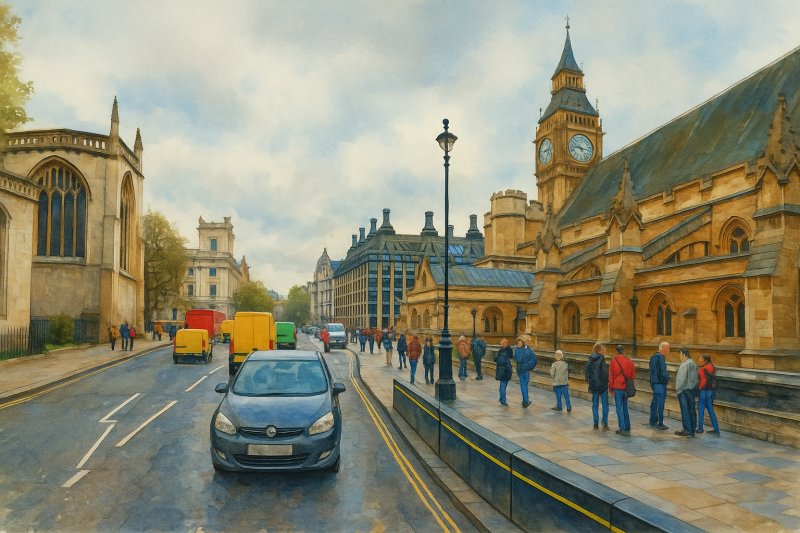
Westminster: The Heart of Power and Pageantry in London
Where Is Westminster?
Westminster is a central London district entirely located within the City of Westminster borough. It stretches along the north bank of the River Thames and is bordered by St James's and Mayfair to the west, Covent Garden and Soho to the north, and Lambeth (across the river) to the south.To its east lies Whitehall, a corridor of government offices, and beyond that, the City of London. Westminster is the core of governmental activity in the UK and is often synonymous with British politics.
Size and Demographics
Westminster is a relatively compact area, approximately 1.5 square miles (3.9 square kilometres) in size. Despite its prominence, it has a modest residential population. Estimates suggest that around 10,000 to 12,000 people live in the Westminster area proper, though the broader City of Westminster borough has a much larger population.The population density is low here largely due to the dominance of government buildings, offices, historic sites, and institutions rather than residential housing.
In terms of income, the City of Westminster ranks among the wealthiest boroughs in London. While data for Westminster as a sub-area is limited, its per capita income is likely higher than the London average, thanks to the proximity to government, business headquarters, and luxury properties in adjacent neighbourhoods.
Map of Westminster, London
Historical Background
Westminster has a storied history dating back to the early medieval period. The area began to rise in prominence in the 11th century when Edward the Confessor built Westminster Abbey and the original Palace of Westminster nearby.By the 12th century, Westminster was becoming the de facto seat of English government, separate from the City of London to the east. Over time, Westminster grew to encompass not only religious and political institutions but also royal palaces and courts.
The area saw substantial development in the 17th and 18th centuries with the expansion of Whitehall, the construction of new government buildings, and improvements in transport and city planning. Today, Westminster remains the symbolic and functional heart of the UK's political and ceremonial life.
Origin of the Name "Westminster"
The name "Westminster" originates from the combination of "west" and "minster" (a type of church or monastery). The name was used to distinguish the Abbey Church of St Peter (now known as Westminster Abbey) from St Paul's Cathedral in the City of London, which was referred to as the "East Minster" in early medieval documents.The term "Westminster" began to be widely used in the 11th century after Edward the Confessor established the royal palace and abbey here. Over the centuries, the name came to represent not just the abbey but the entire surrounding district.

Painting of Westminster (View full-size image here)
Major Roads in Westminster
Several significant roads pass through Westminster, facilitating movement and connecting it to other parts of London. Notable thoroughfares include:- Whitehall - The famous street of government offices running from Trafalgar Square to Parliament Square.
- Victoria Street - A major east-west route linking Westminster Abbey with Victoria Station.
- Birdcage Walk - A scenic road bordering St James's Park to the north.
- Millbank - Running along the Thames, home to the Tate Britain and various office buildings.
- Parliament Street - Continuation of Whitehall, leading directly into Parliament Square.
Landmarks and Iconic Buildings
Westminster boasts some of the most recognisable landmarks in the UK, and indeed the world. Key attractions include:- The Palace of Westminster - Home to the UK Parliament, including the House of Commons and the House of Lords.
- Big Ben - Technically the name of the bell, but commonly used to refer to the Elizabeth Tower.
- Westminster Abbey - A royal church and UNESCO World Heritage Site, the setting for coronations and royal weddings.
- Westminster Cathedral - The mother church of the Catholic Church in England and Wales, known for its neo-Byzantine architecture.
- 10 Downing Street - The official residence of the British Prime Minister.
- Churchill War Rooms - The secret underground command centre used during World War II.
- St James's Park - A beautiful royal park just to the west, popular for walks and views of Buckingham Palace.
London Underground Connections
Westminster is well-served by the London Underground, making it highly accessible for both residents and visitors. The key stations are:- Westminster Station - Served by the District, Circle, and Jubilee lines. This is the most convenient stop for the Abbey, Parliament, and Big Ben.
- St James's Park Station - Also served by the District and Circle lines, close to Birdcage Walk and the eastern end of Victoria Street.
- Victoria Station - Served by the Victoria, District, and Circle lines, and offers National Rail connections.
A Few Fun Facts About Westminster
- Only Royalty Can Ride Through Certain Gates - In St James's Park, the "Queen's Gate" near Horse Guards Parade is traditionally only used by the monarch.
- There's a Hidden Nose - Near Admiralty Arch, there is a small sculpted nose on the wall, part of a modern urban art installation. Some say it was to mock Napoleon.
- The Oldest Door in Britain - Inside Westminster Abbey, there is a door dating back over 900 years, believed to be the oldest in the UK still in place.